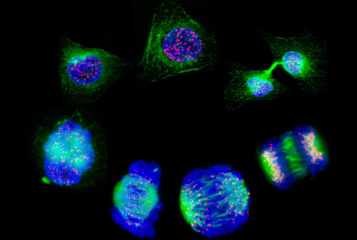A gene that confers resistance to bird flu transmission in humans could help researchers to predict which new strains could lead to a pandemic.
Avian influenza A virus (IAV) pandemics have occurred relatively frequently, including the 1918 'Spanish flu' which claimed around 25 million lives. More recently, the H7N9 variant has infected more than 1500 people since 2013 with a 40 percent fatality rate. Research led by the University of Glasgow showed that all of these strains were resistant to the BTN3A3 gene, suggesting this is a key risk factor in predicting which strains could be transmitted to humans.
'We know that most emerging viruses with human pandemic potential come from animals. It is therefore critical to understand which genetic barriers might block an animal virus from replicating in human cells, thereby preventing infection,' said senior author Professor Massimo Palmarini.
The research, published in Nature, involved screening human cells with IAVs, and identified BTN3A3 as a gene that suppresses viral replication for IAVs of avian origin.
They then showed that the BTN3A3 protein binds the viral nucleoprotein (a protein associated with the viral RNA genome) to inhibit replication and was shown to be protective when overexpressed in the lungs of IAV-infected mice.
BTN3A3 is normally expressed in the human respiratory tract and is upregulated following immune system activation to protect against infection. The research team demonstrated that 77 percent of avian IAV strains found in human patients can evade BTN3A3 activity through mutations in the nucleoprotein sequence. Furthermore, over 99 percent of BTN3A3-resistant IAVs came from avian lineages with low pathogenicity.
First author, Dr Rute Pinto, said 'Identifying BTN3A3 resistant variants when they first emerge in birds might help prevent human infections. Control measures against emerging avian flu viruses can be tailored specifically against those that are BTN3A3-resistant, in addition to other genetic traits known to be important for zoonotic transmission.'
The new data could enable scientists, to better predict the potential of novel influenza strains to cause pandemics quickly, and improve overall genomic surveillance.
As Professor Palmarini told the Times: 'There will be a point where from the genetic sequence of a virus, we will be able to characterise all the risks of what it is that this virus can do. We are not quite there yet and this is a piece of the puzzle that will contribute to get there.'
Sources and References
-
Key gene that blocks the 'spillover' of avian flu to humans discovered
-
BTN3A3 evasion promotes the zoonotic potential of influenza A viruses
-
A human protein that holds bird flu viruses at bay
-
Human gene identified that prevents most bird flu viruses moving to people
-
Gene found that prevents most bird flu variants from jumping to humans
-
Scientists find gene that protects humans from bird flu





Leave a Reply
You must be logged in to post a comment.